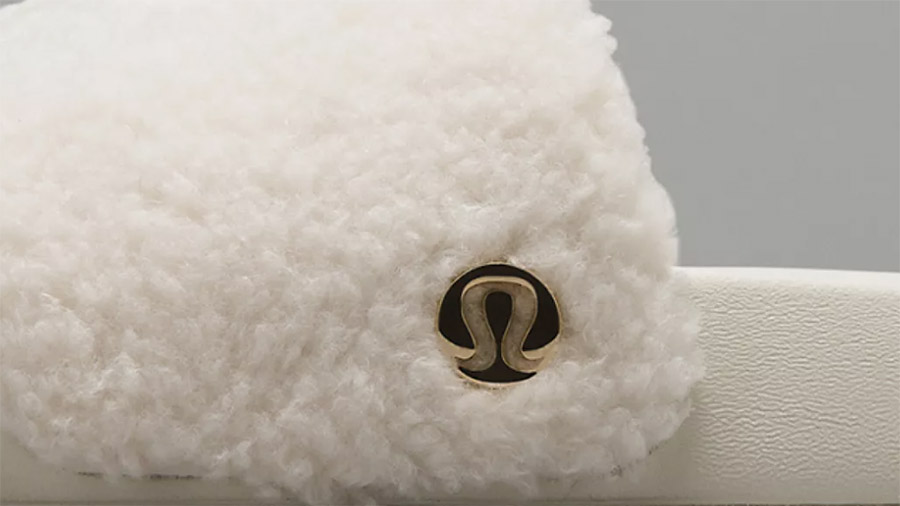At an investor event held in Shanghai, Lululemon Athletica officials did not provide any significant updates on progress made to revive its North American revenues. However, analysts told SGB Media that company laid out a convincing strategy to reach its goal of having international sales ultimately represent half of sales, fueled predominantly by China Mainland.
International sales made up about 21 percent of its revenues in the last fiscal year, with China making 13 percent of the revenues.
“We left Shanghai with a greater appreciation for the unique, community-based and premium category leadership that Lululemon is building with a more localized approach than Western peers,” wrote John Kernan at TD Cowen in a note following the October 9-10 event.
“The Shanghai analyst day left us with greater understanding and appreciation for the China Mainland growth opportunity,” Stifel’s Jim Duffy added. “The brand carries obvious credibility in tier 1 markets such as Shanghai and has an obvious runway for growth through tier 1.5 and tier 2 cities, underpinning a compelling case for China to be a strong contributor to the global growth algorithm.”
Duffy added that new regional operating margin differential details also suggest a capacity for Greater China to achieve scale-led expansion towards North America margin levels. Duffy, however, lamented that the event offered “scarce” financial updates, with the stock in the near-term to be largely trading on signs of recovery in its core North America region.
LULU shares have fallen about 44 percent since starting the 2024 at $511.29 due to slower growth, primarily attributed to softer business in U.S. women. Shares closed Tuesday at $287.48, down 72 cents, in over-the-counter trading.
In reporting second-quarter results on August 30, Lululemon cut its full-year guidance as U.S. comparable-store sales slid 3 percent. Overall, North American comps slowed from gains in the low teens in 2023 to low single digits in the first half of this year.
When the company posted second-quarter results, it reported a lack of enough newness in assortments led to the shortfall and vowed to return to historical levels by spring 2025 to revive growth.
Lululemon’s Shanghai event included store tours and analyst meetings led by Calvin McDonald, CEO; Meghan Frank, CFO; André Maestrini, head of International; and China team members. Highlights included:
- Lululemon officials confirmed the company remains on track to achieve its Power of Three x2 five-year plan (through 2026) that includes calling for quadrupling international segment sales and doubling both digital and men’s businesses while expanding operating margins.
- China sales, in particular, are at a run-rate of over $1 billion, having grown at a compound annual rate of 49 percent from 2021 to 2023, double the total company growth rate over the same period.
- Management forecasted that China could become the second-largest market at profitability comparable to North America. Its goal is to double LULU’s market share in five years.
- In the long term, the combined international segments are expected to reach the same size as North American revenue (versus the 31 percent revenue mix target by the end of 2026), with scale driving greater profitability.
Adrienne Yih, at Barclays, said the meeting left her team with a “clearer picture” of Lululemon’s international growth prospects, particularly in China Mainland.
“In Shanghai, Lululemon is positioning itself as a premium brand – not just in the athletic category, but also a ‘luxury’ brand – and resonating with consumers through localized community messaging focused on empowerment, along with its signature ‘sweat’ branding,” wrote Yih in a note.
Yih pointed out that Lululemon’s management sees China Mainland as a $33 billion athleisure market likely to experience tailwinds from the Chinese Government’s “Healthy China 2030” directive supporting physical well-being. Other drivers in China cited by Lululemon officials included men’s, new digital channels, pop-up stores, and new store openings in Tier 1.5 to Tier 3 cities.
“From our boots-on-the-ground perspective, we observed that LULU’s pricing is at a premium versus other athletic brands, and discounting is rare—similar to its U.S. positioning,” said Yih. “LULU’s aspirations to be a premium global brand were evident through 1) stores in targeted pinnacle/upscale malls and 2) price points in line with the U.S. for similar products (or even slightly above).”
Barclays reiterated its “Equal-Weight” rating on LULU at a $261 price target as the investment firm still expects investors to wait for more evident signs of a recovery in North America. Yih wrote, “Beyond the international strategy, the analyst day provided little new information on the company’s Americas business, which is currently the most uncertain aspect of the LULU story.”
Sharon Zackfia at William Blair said Lululemon’s team reiterated its “growing up locally” strategy in China, similar to other regions, to support sustainable growth.
“The core of this strategy is central to the company’s overall philosophy to open markets with a community approach, leaning into relevant channels, product, and its ambassador-led engagement model,” wrote Zackfia. She said Lululemon indicated that some 30 percent of products are now made specifically for Mainland China and, over time, will expand to 35 percent. Zackfia also noted that Lululemon’s China operations benefit by bringing a “full assortment to customers from day one,” helping establish footwear, bags, men’s, and outerwear categories more quickly.
Zackfia reiterated her “Outperform” rating, believing that while concerns about the U.S. market will continue to pressure the stock, Lululemon “is in the earliest innings of being transported overseas while still having significant room to grow awareness in the core North American market.”
She also noted that Jonathan Cheung, appointed global creative director in January, “has already had an impact on spring 2025 product, reinforcing the view that sales can inflect more meaningfully early next year. This should be most pronounced by better conversion with existing customers, who are more sensitive to newness and drove much of the shortfall in the second quarter.”
TD Cowen‘s Kernan noted that brand awareness in China is still only 15 percent, below Canada’s 48 percent and the U.S.’s 36 percent, with France, Germany, and Japan at 7 percent.
“We see an opportunity to seed, scale and maximize the financial impact in the $33 billion active lifestyle market in China,” said Kernan.
Kernan was impressed with the brand’s technology on the WeChat app, which he said could become Lululemon’s largest “store” in China. Marketplaces such as Tmall, JD and Douyin (social commerce) are also scaling.
Kernan reiterated his “Buy” rating at a $382 price target, citing his belief that sales in North America will soon resume healthy growth.
“We have confidence that new product, integrated marketing, and online momentum combined with loyalty, a healthy high-end customer demographic, and athleisure fashion trends will yield traffic, improving conversion and comps,” wrote Kernan. “Our recent survey indicates a high degree of loyalty and conversion levels should increase as we expect new product to incorporate fashionable versatility.”
Stifel’s Duffy reiterated his “Buy” rating at a $370 target price on his belief that Lululemon’s U.S. women’s will stabilize and soon inflect toward growth. Duffy wrote, “We expect shares to move in advance of this and see LULU as a strong candidate for outperformance into year-end.”
At Morgan Stanley, Alex Straton noted that Lululemon’s “thoughtful/localized China approach was on full display” at the event. Straton said LULU’s management indicated China is outpacing North America in part because less newness is required in the newer market.
“Across the Shanghai store tours, we also observed 1) wider assortment breadth than typical NA stores, 2) clearer product segmentation by activity (i.e., running, training, yoga, casual, vs. US more product type oriented – pants, bras, tops), & 3) a more dual-gendered approach (what LULU is retrofitting many NA stores for),” Straton wrote. She also highlighted how LULU has effectively used WeChat and other digital platforms in China for clienteling tactics.
The analyst, however, reiterated her “Overweight” rating at $314 as she believes skepticism around the return to robust growth in North America will hold back gains. Straton wrote, “We aren’t convinced that U.S. growth challenges will be entirely solved via ‘newness,’ & view the following as additional contributing factors: potential younger consumer trade-away, a long product replacement cycle, further casual/OTM [off the mall] penetration, product quality compression industry-wide, & a more crowded activewear competitive landscape, among others.”
HSBC maintained its “Buy” rating at $375 target in a note following the Shanghai event.
Analyst Akshay Gupta said low unaided brand awareness in most markets offers a sizeable growth opportunity. He added that China “should remain in a high-growth mode” while noting that Lululemon indicated they plan to enter Italy, Turkey, Czech Republic, Belgium and Denmark in 2025 with a long-term plan to enter India, Indonesia, Philippines and Vietnam.
Akshay also believed it was a “positive” that Lululemon didn’t adjust guidance for the year, implying that current targets “are still valid.” In reiterating his “Buy” rating, Gupta said he doesn’t expect Lululemon to further reduce guidance for the year, believing its product missteps are “structural in nature” and can be fixed by the first quarter of 2025. The analyst wrote, “We understand investors’ concerns around a tougher competitive landscape, slowing U.S. business and lingering product execution issues, but we believe the stock has been oversold.”
Image courtesy LULU
















